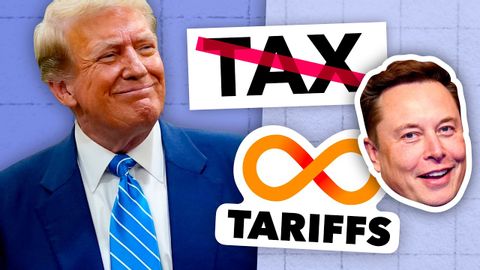特朗普會讓經濟崩潰嗎? (Would Trump Crash the Economy?)
Kevin 發佈於 2024 年 11 月 14 日  沒有此條件下的單字
沒有此條件下的單字US /ˈstrʌɡəl/
・
UK /'strʌɡl/
- v.t./i.奮鬥;掙扎;打鬥;搏鬥
- n. (c./u.)掙扎;掙扎;奮鬥;難題
US /ɪnˈkrɛdəbəl/
・
UK /ɪnˈkredəbl/
- adj.難以置信;偉大的;令人難以置信的;難以置信的
- adj.巨大的;大而重的;大量的;厚重的;大規模的
US /əˈpærəntlɪ/
・
UK /əˈpærəntli/
